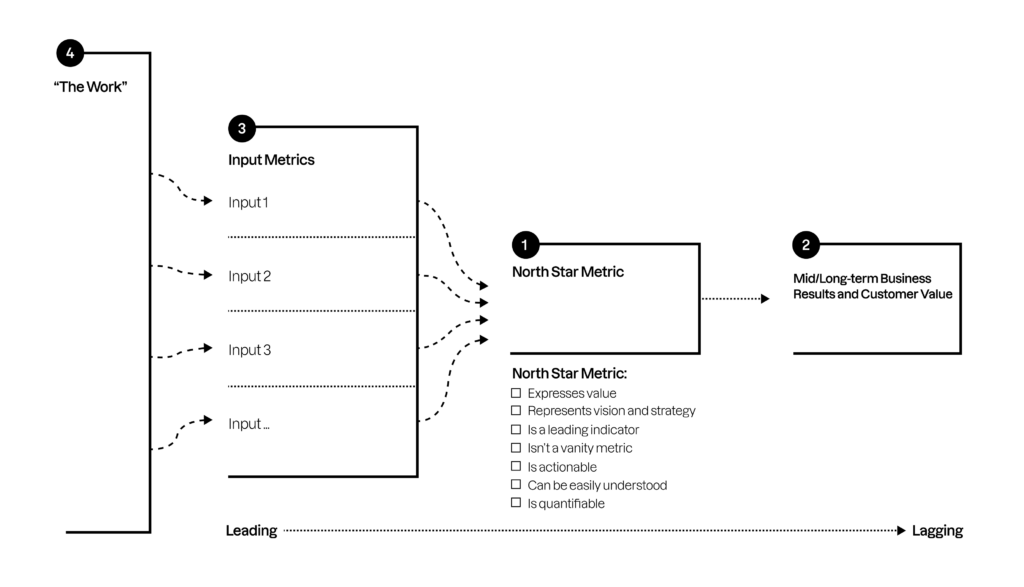In today’s ever-changing tech market, creating a common understanding within companies to get strategy and vision messages across all areas and departments has never been more crucial. Competitive advantages are ephemeral, as changes are taking place all the time. What should companies like yours do when their dynamic environment can be disrupted at any time? How can your company make sure all employees are working towards the same objective?
Your strategy and vision should be clear to anyone in the company, not only in client-facing departments but across the whole organization. With this in place, decision-making processes will be accelerated, and teams will maintain their focus on what matters the most to the company and ultimately to their customers. A solid vision and strategy clarifies where efforts should be spent and where they shouldn’t.
However, more often than not, these elements feel out of touch with day-to-day tasks for a lot of employees, especially for those with low or non-existent customer interaction. This is especially true in companies where front and back office areas tend to be completely out of sync with one another, as they are perceived to be sales and all the other departments that enable them.
Many professionals wonder how to communicate the same message to all areas of the organization as they need to be on the same page, not working in silos with different objectives, but actually collaborating and understanding how any employee could help the company achieve coveted business goals.
The North Star framework emerges as a guiding light illuminating the path toward alignment between business objectives and product development. No matter what department teams are from, this framework aligns everyone towards the same strategy, helping retain the focus on what is valuable to the organization. With it, teams gain context, shared understanding and hypotheses, and also can directly capture the value that companies provide to users and customers, thus building a powerful prioritization tool.
One key disclaimer is that the North Star framework is especially useful for companies that aspire to be more product-led, since the growth of these companies is tied to their ability to solve certain user pain points within their products. Companies that aim to sell and grow their business through their product are well positioned to take advantage of the North Star also because product analytics are easier to monitor and track than off-platform efforts. These types of companies can be B2B or B2C across different industries, however SaaS emerges as the main example which depicts what product-led means, using its product to improve user experience thus securing adoption and retention as essential targets.
Now, to establish a North Star metric we first need to hold a series of workshops where all areas of the company are involved to define together, in a collaborative way, a metric that has the following characteristics:
- It should showcase value to customers
- It should capture the strategy message from the company
- It should be a leading indicator
- It shouldn’t be a vanity metric
- It should be actionable to all teams or areas
- It should be measurable
- It should be understandable to any employee
Let’s analyze these characteristics together:
- Showcase value to customers: The metric should be related to a critical event or action inside the product or experience that the company believes generates the most value to their customers. Usually this discussion becomes paramount for the framework as it must take place between different stakeholders across the organization in order to reach common ground. Furthermore, grasping all possible perspectives creates a sense of collaboration between team members that builds trust and coordination from the start.
- Capture the strategy message from the company: This metric must be communicated to everyone inside the organization, this is why it is important to bear in mind that the company’s strategy might not be 100% the same as the product strategy. Misalignment between company and product is not that uncommon, especially when companies are not product-led and barely rely on their products to grow sales. Frequently, we ought to begin with the company’s vision and relate to what we do as a company to generate value to our customers, tying back the North Star metric to the value creation previously mentioned. Moreover, this is the point in which value and strategy connect, thus making clear the connection between the critical event that generates value and the strategy of the company.
- A leading indicator: The metric needs to be related to user behaviors that attempt to predict business outcomes that normally are lagging metrics. This indicates that the critical action we were discussing above should convey an actual human behavior or in the best case scenario the “aha moment”. For example, the number of sessions per user could be an indication of value being realized by users when using a certain platform, in this case the frequency of usage is perceived as valuable.
- Not a vanity metric: Our metric can be misunderstood as being valuable or a signifier of real return on investment for the company. For example, MAU (monthly active users) is a quite general metric that is tracked and is very deceptive as the definition of active is very subjective, while changes in behavior will not be made immediately apparent. MAU can be exciting but doesn’t help to fully understand performance and what it is that the user really needs or values.
- Actionable to all teams or areas: The shared understanding we’ll build is what aligns teams together, as it means everyone knows what they can do in order to affect our metric and therefore making contribution visible across teams. The North Star and its input metrics which affect it, will create a coherent relationship between tasks that teams are performing and its possible outcomes.
- Measurable: The North Star metric needs to be able to be calculated. It may sound obvious, but the metric should be an actual number, not just perception or intuition. It needs to be monitored and tracked continuously to understand how behaviors and relationships between the North Star and its input metrics are evolving as well.
- Understandable to any employee: Everyone inside the company must be able to grasp it. This is why it’s important to make it simple and easy to remember and also ensure input metrics are closer to teams which may not be used to working with customers. For example for a back office team such as engineering the number of sessions per user may not mean much, but an input metric such as product’s uptime is paramount to enable users to use the product any time.
Once we’ve defined the North Star metric, it’s possible to debate which input metrics could impact it. As I have explained above these are normally variables or factors that the company believes can contribute to or directly affect the North Star metric. Here it is where the actual work from each area or department will be more visible, as it will be related to one of these input metrics. In addition to shining a light on how each team member contributes to achieving a business goal, it will help them prioritize tasks they frequently perform, thus making an impact on an input metric.
Input metrics are commonly categorized into 4 types: breadth, depth, frequency and efficiency. Breadth refers to the quantity of users that could be interacting with a company’s product, depth indicates the level of that interaction or engagement, frequency alludes to how often this interaction occurs and finally efficiency points out the quality of that interaction or engagement. Normally 3 to 5 input metrics are enough to focus on in the North Star framework, but it’s also important that all categories are used in order to have the full picture of metrics that affect the North Star. In the following figure it is possible to understand the relationship between each team’s work, input metrics, North Star and business outcome.

Taken from Amplitude’s North Star Playbook
The North Star framework starts with a discussion that is not only based on evidence, but also on some gut feeling as well, because it is also a hypothesis that needs to be proven with time. Maybe team members are not sure about the North Star they have defined, however, keeping track of data, relations between them and lastly to a business outcome will create trust in the metric or even suggest that a change is needed.
Companies must understand the framework must adapt to changes in the market and customers, thus keeping an open mind and at least once a year getting back as a team to review input metrics and North Star itself. Human behaviors change, and companies need to keep open eyes constantly and watch out for trends before it’s too late to act.
In conclusion, the North Star framework creates a single metric that aligns all teams towards the company strategy and vision and that captures the value it creates for customers. This metric should be the result of a collaborative effort between all areas of the company and it needs to be measurable, easy to understand, actionable and a leading indicator. I believe with the North Star in place, all teams across the company should be able to prioritize resources and tasks that actually create value and affect directly or indirectly this metric.
